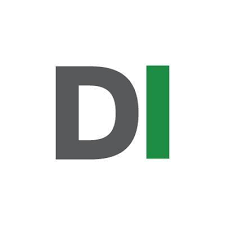By Mark Hudson When it comes to modernizing from legacy to agile platforms, insurance carriers have often been reluctant to act. Given the time, costs, and resources invested, no one can blame them. However, as the industry enters the Rapid Connection Age—where insurers can connect, upgrade, and swap out an ecosystem of technologies quickly and easily in order to stay competitive—carriers have the opportunity to experience faster growth and the ability to better serve the modern customer. While business leaders have often feared the costly ‘rip-and-replace,’ cloud-native platforms now offer solutions that enable carriers to ‘peel away’ old layers of legacy systems on their own timeline, while saving on costs and enjoying the benefits of a modern platform.
Get first-mover advantage with speed to market
For most carriers, the immediate benefit of switching to a cloud-native platform is achieving speed-to-market. A recent study revealed that insurers can trim product launch times from years to mere months. However, many carriers have legitimate concerns when it comes to modernization, including an understandable reluctance to invest in the change management, the perceived loss of control carriers get with their own platforms, and budgetary constraints. Celent and Gartner have both indicated that carriers with legacy systems spend 70% of their IT budgets maintaining them. Despite this, insurers can develop plans to modernize and ultimately experience the freedom to launch diverse products quickly and achieve greater ROI over time. The industry has sped up in the last few years, creating an urgency for business leaders to remain competitive. The solution for many carriers may lie in creating and initiating a plan to integrate modernization over time. One common misconception is that agile systems must completely replace traditional legacy systems in one fell swoop–a classic ‘rip and replace.’ However, insurers can set a plan to implement modern core platforms on their own timeline, while still achieving the benefits of speed-to-market and the growth they desire.
Pivot focus from manual processes to high-value projects
One of the major benefits of modernization is the reduction of manual processes, such as underwriting and risk selection, claims handling, and reporting. Agile technologies enable seamless data capture, powerful workflows, and advanced analytics to free up a workforce from performing error-prone manual entry tasks. The resulting effect is that employees are freed up to focus on high-value tasks that more directly impact growth, such as relationship-building, project innovation, and more. For example, Underwriters can now focus on larger, more complex risks that require manual touch. Insurance agents’ data entry tasks are reduced, so that they can build customer relationships and increase their books of business. Once insurers are empowered to refocus their workforce on more valuable tasks, they can continue operations and see no reduction in productivity, as cloud-native platforms don’t need site-specific maintenance. Insurers can easily go remote, whereas legacy systems don’t enable an adaptive workforce.
Better serve a modern customer base
Now more than ever, consumers expect seamless interactions with their insurance carriers. From transparent, flexible pricing to instant quote-and-bind and self-service policy access, customers continue to seek out trusted insurance providers whose products are designed to fit their needs. The insurance industry has recently seen many carriers struggle to meet these new expectations. Those who have cloud-based infrastructure have fared a lot better than those stuck on old on-prem solutions. It’s clear that modern insurance customers prefer their trusted brands to deliver diverse products that they can buy on their mobile devices from the comforts of home. They also want to understand what they’re buying through access to online educational materials, user-friendly customer portals, and a diverse range of products that are purchased in minutes, not days. Similarly, agent and broker partners are selecting carriers that can serve this modern base, especially as the next generation of insurance customers start shopping around. McKinsey estimated that the personalization of services will reduce customer acquisition costs by up to 25%.
Enhanced security affects the bottom line
Modern core platforms protect insurers’ investments by safeguarding customer data through end-to-end encryption, dynamic firewall rules, and SSO capabilities. Cloud-based systems operate with enterprise-grade security, making it far more secure than the average legacy system. A recent study revealed that the largest number of security breaches with an average cost of $9.23 million in losses were experienced by companies using legacy operating systems. Carriers that choose to modernize can not only enhance the safety of their customer data, but reduce security risks and their associated costs.
Easier innovation and a diversified product line
Many insurers struggle to balance the costs of legacy systems, while also offering new and diverse products that serve modern customers. In fact, many insurers still rely on COBOL — a technology that’s more than 60 years old — to perform core business operations. This contributes to cumbersome maintenance costs, plus it exposes carriers to other risks, including security threats and a lack of developers that are trained in the technology in case a system fails. With cloud agile technology in place, carriers can more easily integrate new technologies. This results in the ability to enter new markets and launch innovative new products much faster. As most carriers know, speed-to-market helps them grow and remain competitive in a rapidly changing industry.
Closing
By taking steps to modernize, insurers are essentially freed up to develop their plans for growth, pivot their focus to developing new products, and better serve their customers. They can achieve market share in new markets through faster integrations and access to industry-leading products and services that help them diversify their products and scale.
Mark Hudson, Socotra
Mark Hudson leads the pre-sales function of the business team at Socotra, a cloud-based platform for technology-driven insurers. Hudson works with insurance executives everyday, and has overseen more than 50 deployments in his leadership at Socotra and in prior roles at BriteCore. He has been trained in both SCRUM and SAFe delivery methodologies.
About Socotra
Socotra brings unparalleled speed, flexibility, and choice that gives insurers more control over their businesses. With Socotra’s complete insurance solutions, insurers and MGAs of all sizes can accelerate product development, reduce costs, and improve customer experiences. Socotra provides open APIs, a product-agnostic data model, and out-of-the-box capabilities to manage the entire policy lifecycle, making insurance innovation faster, easier, and more affordable.






